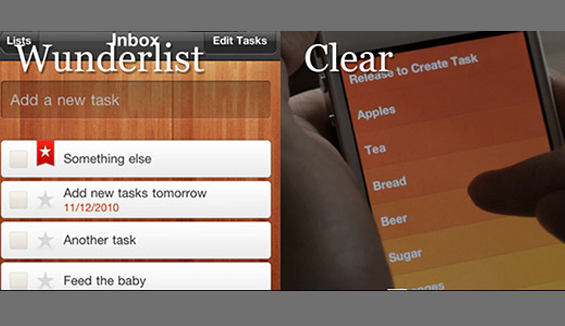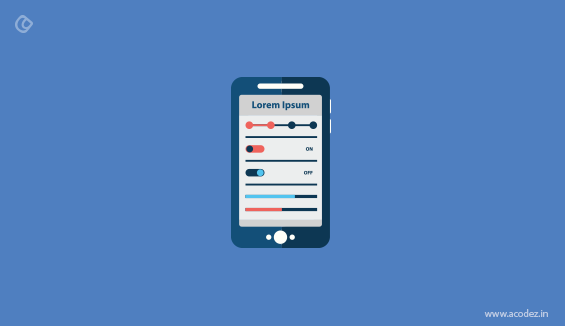Information Architecture, according to Wikipedia, is nothing but “the art and science of organizing and labeling websites to support usability” whereas “the way a person feels about using a system, product or service is known as User experience that includes a person’s capability of perceiving practical aspects like utility, efficiency and easiness in using that system.
Thus user experience brings Information Architecture as the base and takes it to higher level. Information Architecture is a particular task that can be shared by developers, designers and content strategists. It influences tools and resources that should be needed in developing the task and based on it is a field of its own which crosses multiple roles.
Also Read: UX designer tips for designing an awesome landing page
Information Architecture is the building of website structure, project or other application which makes us understand what information we need to navigate to other page. It thus results in creating hierarchies, navigation, categorizations and metadata. The information architecture used by content developer is when they divide content and make it into categories whereas designer creates a menu bar to help users understand to know the position on the site.
How Information Architecture focuses on the structure?
It can be used from a simple brochure site to a complex information system by focusing the content structure in which a user navigates through it. By using a plethora of user-centric design methods like user flow diagrams, personal research and creation and usability tests, IA (Information Architecture) builds content structures that are usable out of complex ones.
Thus IA forms only a small part of overall experience of the user on a site.
Why is it so?
Here is the answer
Emotional approach wins greater user experience

The designers who focus on user experience create website architecture at a higher level and they not only consider easy navigation but also maximum engagement. Thus they create a design to impart desirable, predictable and cohesive effect on the target audience. How they create such designs? It is nothing but they work on user’s emotional level to elicit emotional response to designers’ accomplishment. The designers study user mind and add context or story that gives something to take away from their experience.
The user experience is not just a small thing to be mentioned but it is something that must be given by adding the factors like Information Architecture, content strategy, usability, creativity. When a creative designer combines with Information Architect, the best user experience will take its role.
Also Read: Tips on Resolving Creative Conflicts for Website Designers
Not only easy, not only cool, but being both
If you need a good user experience, you need a good IA. Do you agree with this statement? If yes, here is another way to get it. It is a fact that Information Architects don’t consider user experience but user experience designers consider IA to the core. A usable experience is quite simple and easy and your job will be done quickly but an engaging experience provides cool and lasting impression on the user.
An example is using Wunderlist and Clear apps where Wunderlist is easy and good usable tools, but Clear is engaging and fun giving.

Source: http://www.uxbooth.com/articles/the-difference-between-ia-and-ux-design/
Everything is in the approach

To understand the workflow of every department will be quite difficult. But let’s have a comparison on the workflow of Information Architect and User experience (UX) designers.
The UX designers mainly focus on the emotional goals of the targeted users along with considering IA’s workflow. They consider interaction models rather than layout and structure part.
The Information Architects on the other hand consider the necessities of the users, research on the objectives and perform competitive analysis. In the conclusion they generate wireframes, page flows, sitemap and add testing, fine tuning and will be given to UX designers.
For providing good user experience in the early 70s before the rise of mobile and web apps, Information Architecture has taken its role. Thus it has roots on different methodologies and fields like cognitive psychology, library science and architecture.
Library science

Information Architects are connected to library science through archival science and cataloguing. Cataloguing creates metadata and directs it to content to find during future purposes. Archival science builds archives in the content which can be deleted or edited to maintain archival integrity. Information Architects creates appropriate usable meta data with well-maintained archive and thus they are directly translatable to user experience.
It is a common methodology to know how mind works while going through a website, so it is not a wonder that it influences both the way the architect information and interactions we design. Here are some factors that are valued by information architects:
Mental models
They are assumptions by people before visiting a website and information will be easier to find when it matches users’ mental model
Cognitive load
It is the amount of information that a user can keep in mind at once. This helps Information Architects not to overload information all at once.
Decision making
At timely moments, Information Architects help us to make decisions by giving certain information.
Architecture
Information Architecture can be in many attractive forms, and depends on a strong foundation of ideas and intentional structure even though IA provides everything from libraries to websites.
With the help of Information Architecture, we can analyze the product that is represented in a large diagram with its functionality and hierarchy levels, directional arrows and groupings.
Information Architecture is capable of showcasing complete information about your product like menu, toolbar, feature cluster, every possible ways to achieve tasks, and connection between tools.
Information Architecture has great influence on the quality of software product and the resulting user experience.
Here are some reasons why your product needs Information Architecture for a sound user experience.
- An Information Architecture recognizes the high level organizations and the users’ mental model. Mental models are the assumptions made by user before visiting a website or product of choice (discussed above).
- It is the Information Architecture details you the hierarchical levels and the products’ decision layer. This shows how user experience must be dealt in depth. It also gives a clear idea about the number of clicks or pages to finish a task and get the required answer.
- An Information Architecture tells you where content is shown and controls, and it can offer context. Unwanted confusions to the UX will be given when content and controls act on content mixed up within software products.
- IA will be capable of recognizing recursive paths, decision-congestion, places of duplication, unused areas and user experience opportunities and the product’s feature re-use.
- Particular areas of the product can be focused with a clear understanding of feature context as Information Architecture gives details which fall as the basic of usability testing.
- It acts as a blueprint to give details of interaction paths and patterns like task flows, rabbit-runs, green threads etc.
- It further helps the developers and designers for a better understanding of the context of features and also whether the feature depends on different parts of the product.
- Are you planning for new features or want to provide support for existing ones? Then Information Architecture can give you a big picture which will be a great help to managers and executives when they seek the right direction to take the product to future purposes.
So as of now you will be clear with the benefits of IA in good UX.
Now let’s see the tasks done by Information Architect to enhance User experience
User research and analysis
IA performs research to know what users will do with an application, how they will be used and their mental models. After researching all these things, they will start analyzing the data. Using the spreadsheet they will pass it to the team mates with some recommendations and goals.
Navigation and building hierarchy
It is the responsibility of Information Architect to determine about the displaying of the information across the website. To do this in a better way, IA considers the expectations of the user and the messages that must be displayed by the organization.
Data Modeling
Data modeling which is done in spreadsheets will be connected with the content strategist by an Information Architect to determine the particular user needs for content, internal editorial practices, business logic and necessities.
Labeling
Labeling otherwise known as pages or links on a website make sure that the navigation and hierarchy is properly called. This is quite important to know if the users can find the information as well.
Wireframing
Wireframing represents the interactions between different screens and to know how the website works. Followed by research analyses and building hierarchy, Information Architect can share value deliverables with the customers while building prototypes, mockups and final products.
Taxonomies and Metadata
An Information Architect groups the similar data of pieces of information by choosing appropriate website taxonomies based on the target audience’s mental model.
Conclusion
Information Architecture builds the foundation for good user experience to take users to higher level both emotionally and creatively. This is why the apps and websites that are being created nowadays have better performance than those of yesterday.
Acodez is a leading UI UX agency in India offering all kinds of UX and UI design services. to and development solutions to our clients in India and abroad. We can also help you with Digital Marketing services which includes SEO, Inbound marketing, Social Media Optimization and Online Advertisements. We’re also an award-winning web development company in India with 12 international awards in our credit, so far.
Looking for a good team
for your next project?
Contact us and we'll give you a preliminary free consultation
on the web & mobile strategy that'd suit your needs best.










